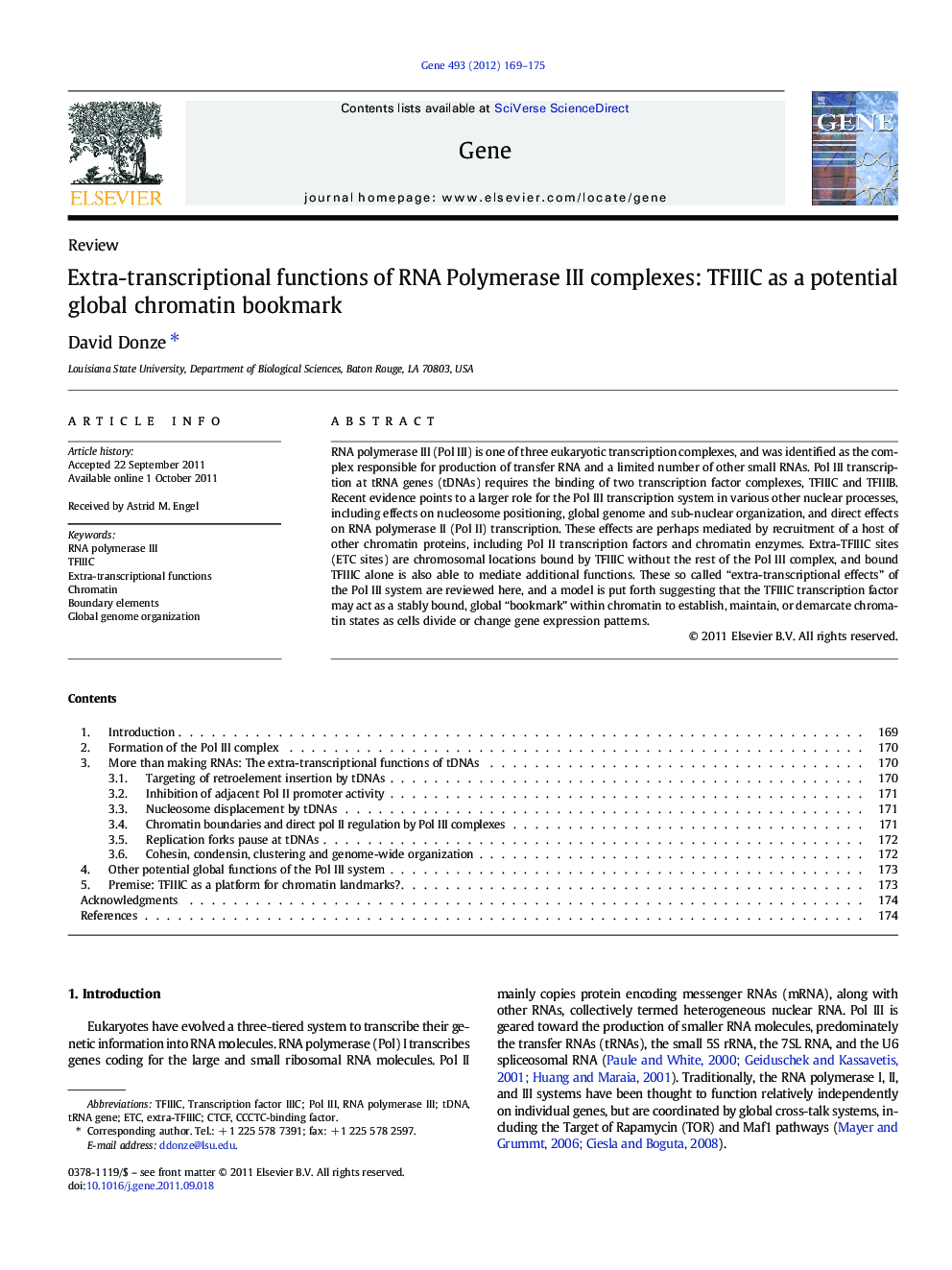| Article ID | Journal | Published Year | Pages | File Type |
|---|---|---|---|---|
| 2817987 | Gene | 2012 | 7 Pages |
RNA polymerase III (Pol III) is one of three eukaryotic transcription complexes, and was identified as the complex responsible for production of transfer RNA and a limited number of other small RNAs. Pol III transcription at tRNA genes (tDNAs) requires the binding of two transcription factor complexes, TFIIIC and TFIIIB. Recent evidence points to a larger role for the Pol III transcription system in various other nuclear processes, including effects on nucleosome positioning, global genome and sub-nuclear organization, and direct effects on RNA polymerase II (Pol II) transcription. These effects are perhaps mediated by recruitment of a host of other chromatin proteins, including Pol II transcription factors and chromatin enzymes. Extra-TFIIIC sites (ETC sites) are chromosomal locations bound by TFIIIC without the rest of the Pol III complex, and bound TFIIIC alone is also able to mediate additional functions. These so called “extra-transcriptional effects” of the Pol III system are reviewed here, and a model is put forth suggesting that the TFIIIC transcription factor may act as a stably bound, global “bookmark” within chromatin to establish, maintain, or demarcate chromatin states as cells divide or change gene expression patterns.
► The TFIIIC transcription factor complex mediates extra-transcriptional activities. ► Bound TFIIIC and RNA Polymerase III complexes affect numerous chromatin processes. ► The persistence of this complex on DNA may be responsible for these activities. ► TFIIIC may play a general role in global chromatin organization.
